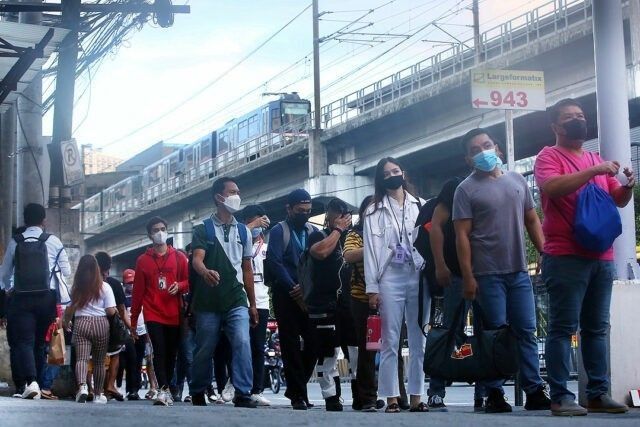Government forgoes over P500 million revenue from free MRT rides

MANILA, Philippines — The government gave up more than P500 million in revenues when it provided free rides at the Metro Rail Transit Line 3 (MRT-3), pushing the Marcos administration to cease the program despite benefiting nearly 29 million commuters during its run.
Data obtained by The STAR showed that the government lost P515.91 million in revenues from MRT-3’s Libreng Sakay program that ran for over three months, or from March 28 to June 30.
The government suffered revenue losses amounting to P155.13 million from March 28 to April 30; P172.67 million from May 1 to 30, and P188.11 million from June 1 to June 30.
The free ride service on the MRT-3 benefited a total of 28.62 million Filipinos who took advantage of the program due to the rising prices of goods and services.
MRT-3 officer-in-charge and director for operations Michael Capati said Libreng Sakay was twice extended to mitigate the impact of inflation on commuters.
The program was launched on March 28 and was scheduled to conclude on April 30. However, former president Rodrigo Duterte decided to extend Libreng Sakay twice – first, for the whole of May and then for the whole of June – to spare passengers from soaring fuel costs.
The program – the longest free ride service in MRT-3 history – also intended to show commuters the improvements made in the rail line since its rehabilitation.
Capati said Libreng Sakay allowed the management to test the upgraded subsystems by raising the riding capacity of the MRT-3.
Based on records, the MRT-3 serviced 8.47 million Filipinos from March 28 to April 30, then 9.6 million passengers from May 1 to 31 and then 10.56 million commuters from June 1 to 30.
In spite of the benefits, President Marcos decided to stop Libreng Sakay due to funding issues. The Department of Transportation (DOTr) advised him to terminate the program, saying MRT-3 fares are already subsidized by the government.
Instead, the President signed a memorandum extending the free ride on EDSA carousel buses until the end of the year. Also, he approved the grant of free rides in the MRT-3, Light Rail Transit Line 2 (LRT-2) and the Philippine National Railways for students.
As recommended by the DOTr, the free train ride for students will run for the first quarter of the incoming school year, or from Aug. 22 to Nov. 4.
The Department of Education projects that more than 38,000 schools will resume their face-to-face classes for the next school year, although the rising cost of transport could hinder some of the students to return to the classroom setup.
“The move will ease the burden of rising living expenses on Filipino families and help them save money – especially with the return of face-to-face classes after more than two years,” the DOTr said.
In a briefer presented to Transportation Secretary Jaime Bautista, a copy of which was obtained by The STAR, the DOTr estimates an average daily student ridership of 6,153 in the LRT-2 and MRT-3. By rail line, the agency expects 4,312 students to take the LRT-2 and another 1,841 in the MRT-3 every day.
The DOTr estimates student ridership to hit 338,404 – 237,149 in LRT-2 and 101,255 in MRT-3 – from Aug. 22 to Nov. 4. The agency told Bautista that the projections were based on the average daily free rides offered by the rail lines in 2019 and 2020.
The Light Rail Transit Authority (LRTA), operator of LRT-2, said it supports the program to grant students with free train rides to help mitigate learning losses by bringing them back to schools.
“We are one with the DOTr goal of helping students whose learning outcomes were affected by the pandemic and also to their parents,” the LRTA said.
The LRT-2, which runs from Recto to Antipolo, is situated along the university belt – a stretch of universities and colleges – in Metro Manila.
- Latest
- Trending





























